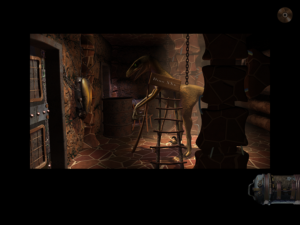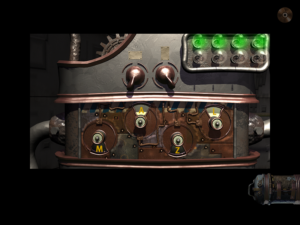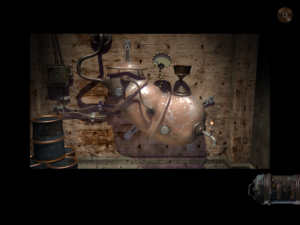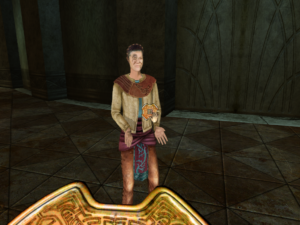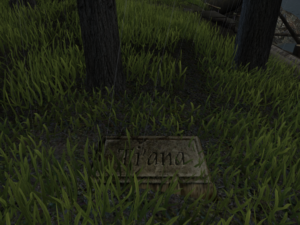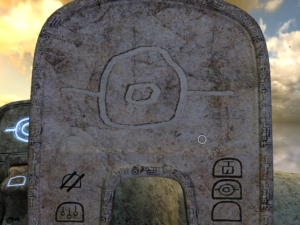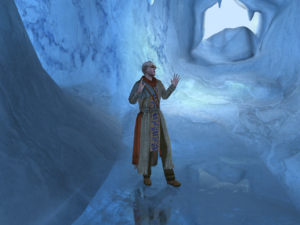Trauma
I am a bundle junkie. That much is clear by now. My Stack has been growing by leaps and bounds lately, and it’s all due to the proliferation of bundles. In the final days of the Comp, two prominent time-limited pay-what-you-want indie bundles approached their deadlines, one Humble, the other Royale. And I had no points left to obtain them under the terms of the Oath. Despite not having particulately cared about the games involved before they were bundled, my reaction was to step up on the Comp-playing to get that out of the way so I could focus on finishing something for the sake of affording the new stuff.
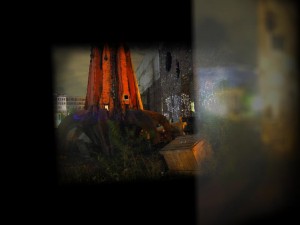 Trauma seemed ideal for this purpose: it’s by all accounts short, and it is itself something I obtained in a recent bundle. Also, it seems a lot like a Comp game, in both length and content. The premise is that it’s the dreams of a woman recovering from a road accident, although that framing isn’t terribly relevant to the content of the dreams, except to the extent that it gives them an extra poignance, and makes it clear that this person really does have genuine problems just now. Without that, the frustrated and defeated tone of the voice-overs might come off as whiny. 1The voice-overs are handled extremely well, by the way: they’re provoked by your looking at things, but they don’t interrupt your ability to look at other things at all. They just queue up if necessary. One of the dreams is about following a well-marked road that ultimately turns out to just go in circles, a clear metaphor for her concerns about her life’s direction. Another involves going off the beaten path looking for a road less traveled, but it turns out to be just as circular as the first, just more difficult to follow. For the PC, merely living is extremely difficult right now, and she’s wondering if it’s worth the effort.
Trauma seemed ideal for this purpose: it’s by all accounts short, and it is itself something I obtained in a recent bundle. Also, it seems a lot like a Comp game, in both length and content. The premise is that it’s the dreams of a woman recovering from a road accident, although that framing isn’t terribly relevant to the content of the dreams, except to the extent that it gives them an extra poignance, and makes it clear that this person really does have genuine problems just now. Without that, the frustrated and defeated tone of the voice-overs might come off as whiny. 1The voice-overs are handled extremely well, by the way: they’re provoked by your looking at things, but they don’t interrupt your ability to look at other things at all. They just queue up if necessary. One of the dreams is about following a well-marked road that ultimately turns out to just go in circles, a clear metaphor for her concerns about her life’s direction. Another involves going off the beaten path looking for a road less traveled, but it turns out to be just as circular as the first, just more difficult to follow. For the PC, merely living is extremely difficult right now, and she’s wondering if it’s worth the effort.
It’s very slickly produced, especially in the cutscenes of the protagonist talking with her doctor that you get after completing each dream, featuring close shots of the her fingers and eyes in such sharp focus that it looks like they were shot through a microscope. Mainly, though, I see it as an experiment in form. It’s more or less a Mystlike, only simpler — which is saying something, because Myst itself was a drastic simplification of the adventure game. And, like the first wave of Mystlikes, exploration is a matter of clicking around between still images — there’s some spot animation, but not a lot. Hovering the cursor over a movement hotspot superimposes a fuzzy version of its destination over the scene, like an out-of-focus photograph, and like a photograph, it’s presented as a 2D image, rotated in 3D space to match the angle you’d be observing it from. It even acknowledges the photographic nature of the graphics by playing the click of a camera whenever you move from one to another.
The photography theme continues into the game content: in each of the game’s four dreams, there are nine polaroids scattered around, tacked to trees and the like. Some of them are pictures of moments from the protagonist’s life, sush as her first day at law school. Some show mouse gestures you’ll need to perform special actions — each dream has exactly one, but you can find alternate endings by using the gestures from each dream at appropriate spots in the others. And some give hints about how to do this by showing those spots, tying together scenarios that are otherwise self-contained, apart from thematic unity. Finding all nine photos in each dream is an optional extra challenge. Finding all the alternate endings gives you a proximity-to-photograph sense that helps with this, a very gamic element in what’s otherwise mostly an interactive art piece.
The angles between vantage points are freeform enough that I sometimes had difficulty navigating, particularly in the fourth dream, where much of the area you can explore lacks persistent landmarks. This is a very prevalent problem in Mystlikes, and even the extra feedback you get from the appearance of the rollover smudges doesn’t solve it. That’s pretty much the only difficulty in the game, though. I managed to even find all of the optional extras in a single session.
| ↑1 | The voice-overs are handled extremely well, by the way: they’re provoked by your looking at things, but they don’t interrupt your ability to look at other things at all. They just queue up if necessary. |
|---|
 Comments(0)
Comments(0)